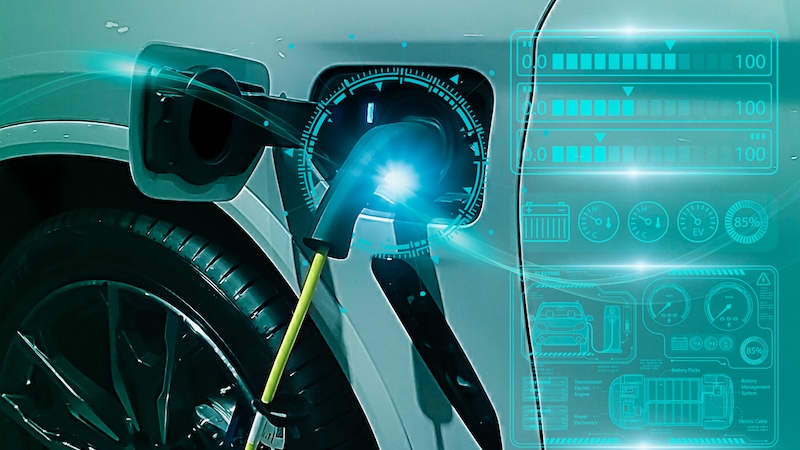
Hybrid vehicles are considered a bridge between conventional combustion engines and pure electric cars. They promise lower fuel consumption, flexibility and lower emissions. But how does a hybrid car actually work?
While environmentally conscious people are increasingly deciding to purchase an electric car, others continue to value the independence from combustion engines. However, if you want to travel emission-free over short distances, you can also opt for a hybrid car.
The vehicle type is now offered in various classes by almost all common manufacturers. There are currently around 30 million hybrid models on the road worldwide. Not applicable in Germany about 27.3 percent of new registrations for the station wagon variant. Between January and July 2024, around 533,400 cars with hybrid drive were built in this country approved – The trend is rising.
How does a hybrid car work?
The term “hybrid” means “a structure made up of two or more components”. In vehicles, this means that the engine combines two different drives. The currently most common combination is the connection of an electric motor with an internal combustion engine. However, there are different types of hybrid vehicles, but the most common are full hybrids, mild hybrids and plug-in hybrids.
Basically, a hybrid car runs electrically. The basic idea is that Advantages of the electric motor and the combustion engine so that the entire system works as efficiently as possible. The electric motor is mainly used on short distances.
It supports the combustion engine with high torque and simultaneously charges the battery while driving. It is also a starter for petrol or diesel engines. Excess energy is stored in a traction battery.
The combustion engine provides additional support on longer journeys. This gives the hybrid car additional range and makes higher speeds possible. An integrated control system automatically decides which drive is activated depending on the driving situation.
This is how the individual hybrid types work
Full hybrid-Vehicles with an output of more than 20 kilowatts are able to drive purely electrically. However, they cannot be charged via a cable. To do this, they need electricity from energy recovery during braking – so-called recuperation.
Also mild hybridModels are self-loading vehicles. However, the torque of the electric motor and the battery power are not enough to drive the car alone. The electric motor only supports the combustion engine to increase performance.
Plug-in hybrids in turn, are not solely dependent on the excess energy when braking. You can also charge via cable. They also have a significantly more powerful electric motor and a larger battery than full hybrids.
The advantages and disadvantages of hybrid cars
Hybrid cars currently offer more flexibility than purely electric cars. By combining electric motors and combustion engines, they can also cover longer distances if necessary and reduce their fuel consumption and thus also their CO2 emissions. The environment benefits, especially in city traffic.
However, there is criticism. For example, the Frauenhofer Institute has found that newer hybrid models’ fuel consumption deviates greatly from the actual test cycles and emissions increase. In addition, the station wagon vehicles are often more expensive to purchase due to their complex technology.
In addition, as with other battery-operated products, rare earths and a lot of energy are required for production. The environmental impact of battery production is therefore not unproblematic.
Also interesting:
- Hybrid platform: Italy wants to build floating wind power and solar system
- Researchers develop the world’s first sodium battery without an anode
- These are the 10 largest car brands in the world – by market share
- Europe: These were the 10 best-selling electric cars in the first half of 2024
The article How does a hybrid car actually work? by Beatrice Bode first appeared on BASIC thinking. Follow us too Facebook, Twitter and Instagram.
As a tech industry expert, I can explain that a hybrid car works by combining the use of a gasoline engine and an electric motor. The gasoline engine is used to propel the car at higher speeds and for longer distances, while the electric motor assists with acceleration and low-speed driving.
The hybrid car uses a battery pack to store energy generated from regenerative braking and the gasoline engine. This energy is then used to power the electric motor and reduce the load on the gasoline engine, improving fuel efficiency and reducing emissions.
The car’s onboard computer system manages the power flow between the gasoline engine, electric motor, and battery pack to optimize performance and efficiency. This allows the hybrid car to achieve better fuel economy compared to traditional gasoline-powered vehicles.
Overall, the combination of a gasoline engine and electric motor in a hybrid car allows for improved fuel efficiency, reduced emissions, and a smoother driving experience. This technology continues to evolve and improve, making hybrid cars a popular choice for environmentally conscious consumers.
Credits